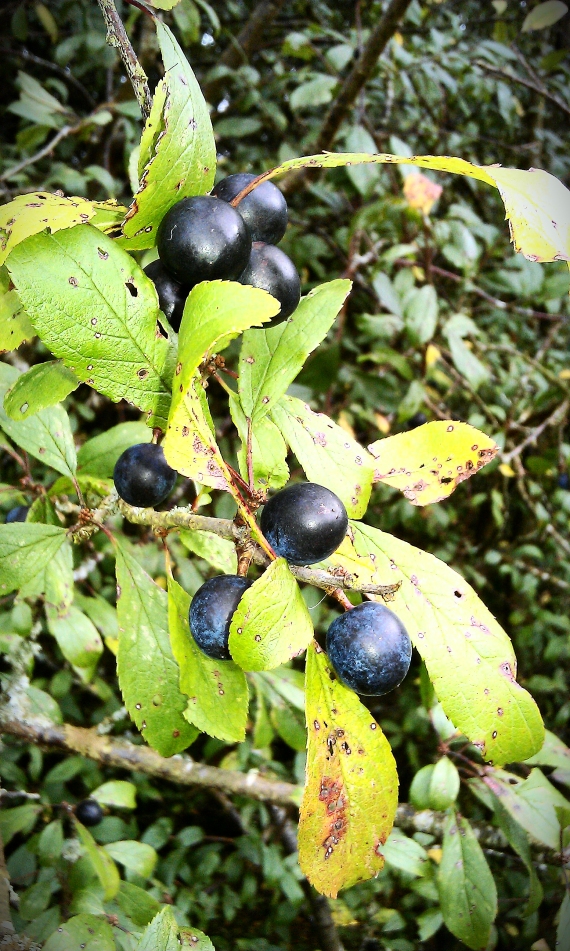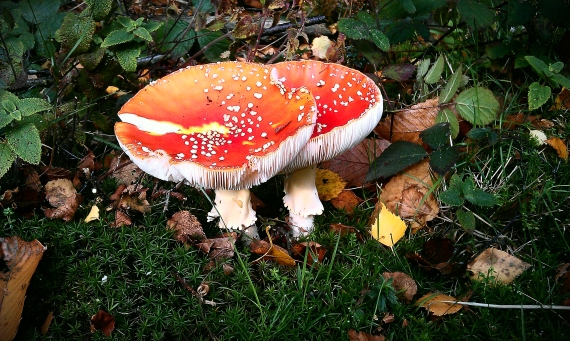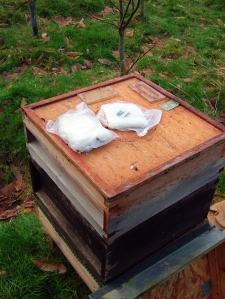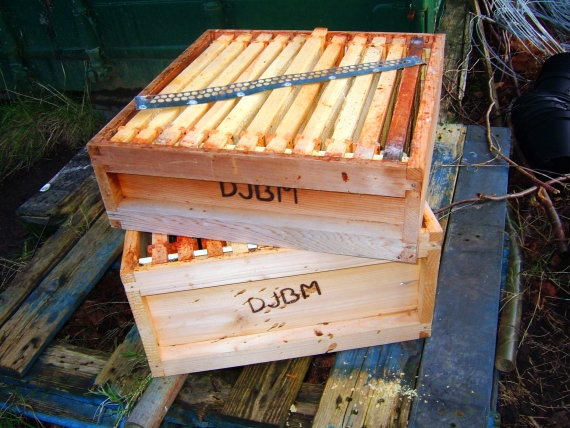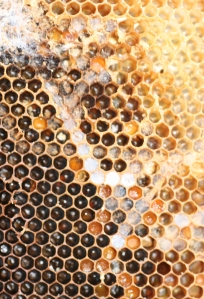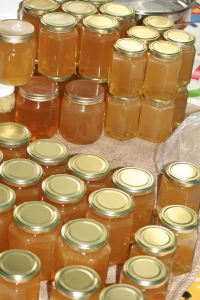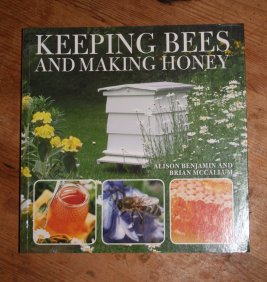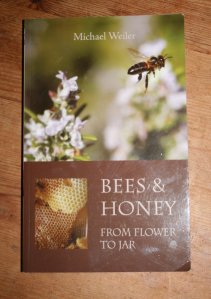Following on from my previous post, titled Bee Venom Therapy (BVT) …. is it a sting too far?, I now want to write a little about the experiences that my wife and I had last year using bee venom to treat her rheumatoid arthritis (RA), if you have just stumbled across this post then I would strongly recommend that you read my previous article to gain some background and understanding of what BVT is and why we are doing this!
Having read Charles Mraz’s book we felt quite confident with the actual direct application of venom at the target sites. We informally discussed the process that we were about to undertake with our GP so that he was aware, and although western medicine doesn’t really prescribe this sort of treatment I think he was both intrigued and entertained at the same time, however he was not dismissive having heard anecdotal stories of similar treatments in the past and has maintained an interest in the results since.
Before the main treatments began we borrowed an epipen (just in case of an emergency!), we then carried out a single ‘test sting’ on the hand to make sure that my wife didn’t have an allergy to bee venom, even though she had previously been stung we needed to make sure that an allergy hadn’t subsequently developed in the intervening years. This also gave a taster or reminder of the pain that would be experienced in the coming weeks and an opportunity for her to change her mind. This whole treatment had to be very patient led, so I did not push the sessions and let my wife decide where she felt she wanted the stings to be applied. Luckily as a chiropractor who also does dry needling she has a very good understanding of the bodies mechanisms and where the trigger points or target areas should be.

Bees waiting their 'turn to help'
The bees are collected into a jar during the normal hive checks and this also set the frequency that the BVT sessions took place, purely through convenience as my bees are located in an ‘out apiary’ (so not kept at home) and we didn’t want to disturb the colonies more than we already do (also bees don’t ‘store’ that well once bottled). The collection jar is just an empty jar with air holes drilled in the lid and some foliage for supporting the bees as they struggle to grip on the glass sides. If they were being left overnight a little honey was also added although this is best avoided as even the bees get sticky.
When the bees are to be ‘used’ they are plucked from the jar using ‘reverse’ tweezers, sometimes called jewellery makers tweezers, that close shut when the finger pressure is released rather than open as in normal tweezers, this allowed me to clamp the bees ready for application of the sting.

Bee held in 'reverse tweezers'
I can’t say that my wife really relished the thought of being stung numerous times, and although she had seen the minor effect it had on me during my previous seasons as a beekeeper she had also seen the slightly more entertaining and dramatic effect of the histamine production when I was stung on my top lip. With the ‘test sting’ being a resounding success we decided to push on with the BVT.
The bees were collected and stings applied on average every 10 days or so, we applied between 10 – 12 stings at each session. Normally this would involve 2 in each foot or on the ankles, 2 on each of the knees and two on each hand, anywhere on the knuckles but we varied this routine depending if one area was particularly painful with the arthritis prior to that session. The stings were left in place for anywhere between 2 and 10 minutes so that full venom dose was received. When the stingers are removed it is important not to use an alcohol wipe on the sting site as this neutralises the effect of the venom. Unfortunately the bee dies after they have used their sting and they also release a pheromone so the dying bees were removed from the immediate area as the BVT sessions took place outdoors and we didn’t want attract any extra non-participants into the area. A few bees flying around your head when you are not behind a veil can be very off-putting!

Stings applied to the knuckle joints on both hands
By the end of the 2011 season my wife had been stung 129 times, so you must now be thinking that she is either a very brave or possibly a slightly mad women, but if you had been diagnosed with rheumatoid arthritis at the age of 35, if it was in your body and your joints, and you were told that the only answer that modern medicine had to offer was to spend the rest of your life taking a cocktail of anti-inflammatory and other drugs (with pretty unappealing side effects in their own right) then maybe you to would be willing to take the chance that an alternative cure could be found.
Well of course I know that that my wife is an intelligent, level-headed women and as I have previously stated we didn’t start this whole process without a lot of thought, research and planning, I guess it was just a case of weighing up the options available to us and the western medicine route felt a bit like giving up hope.

Localised swelling shortly after applying the sting
The stings did exactly what it said on the (yellow and black) packet. They caused localised pain for a short period, followed by a slight redness and swelling at the sting site. Then as histamine is produced by the body the swelling spreads across a larger area of the body, often causing large red swollen areas that last for several days.As the season progressed Emma definitely developed a tolerance to the venom, in the same way that beekeepers often do, and the effects of the venom became less visibly evident. I think that the most discomfort was caused, not by the initial pain of the sting as one may have thought, but rather by the itching over the next few hours and sometimes days, particularly during the hotter days of the summer.
So was the BVT effective?
When my wife was first diagnosed with the RA in 2010 she attended an appointment with an NHS rheumatologist. She had blood samples and x-rays taken to assess her current condition and the extent of any existing joint damage.
The early signs are that the RA is in remission but more importantly than that, having just had the autumn and winter period so dreaded by many RA sufferers as their symptoms worsen during this period my wife has not complained of, nor suffered from painfully swollen joints as she had done during the previous year. So it looks like the BVT has gone some way into reducing both the swelling and pain, the thing we need to find out now is if it prevents damage to the joints or even reverses the process.
The subsequent visits to the rheumatologist has involved further x-rays and tests and although they feel that, against the odds, that Emma is definitely showing signs of remission they do not have much interest in the BVT or accept that it is a potential contributing factor. We will have to now wait until further tests are carried out in future months to see how the BVT is really working, but all the early signs are positive.
I should point out that during the period that the stings were applied my wife was also undergoing other treatments such as acupuncture and a cleansing diet (to me this was harsher than the stings!) so any remission may be attributable to a combination of these treatments. When we reached the end of the beekeeping season in 2011 my wife became concerned that with the bees being ‘away’ and no longer being stung that the symptoms would become worse again and she became quite worried about not being stung, a complete reverse of a few months earlier!
Over the last few weeks my wife has also started to take ‘honeygar’, a combination of honey, cider vinegar and a little water, as a medicine. This come highly recommended in Margaret Hills book ‘Curing arthritis the drug free way’ as well as having more modern day champions such as Ranulph Fiennes, who swears by it for his own arthritis control.
So what is the plan for the future?
As the new beekeeping season is about to begin in 2012, and the girls are out flying again, we will also be starting the next set of BVT sessions. This is my wife’s choice so it shows that she must feel that there was a strong enough benefit from last years BVT to subject herself to the pain and swelling again and hopefully we will continue to see the RA in remission. In the testimonials that I have read people are sometimes ‘cured’ after just a few treatments and others have a longer journey. I guess it is part dependant on the level of RA being treated in the patient as well as other factors such as the level that their auto-immune system is functioning at.
I hope that you have enjoyed reading this article, if you have any experience of BVT, either personally or anecdotal, or would like to make a comment I would love to hear from you. It is still early days for us but sharing this experience is important and maybe it can also be of help to others.
51.132446
0.263315


